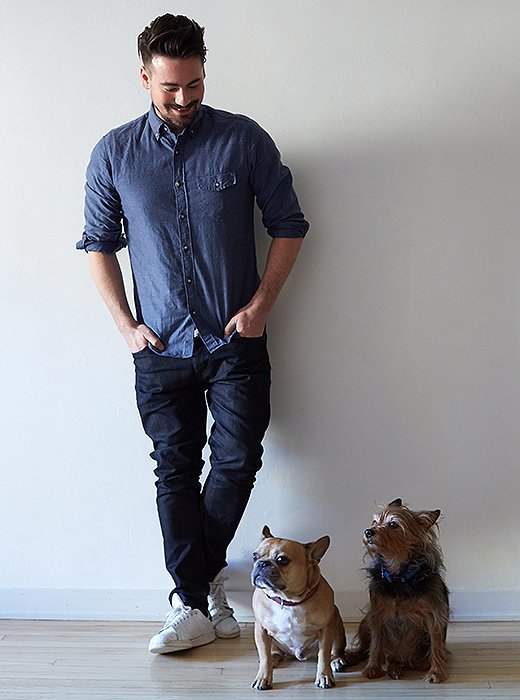
Having spent his early professional years in chic hotels as a bellhop or a bartender, Samuel was influenced by that “pre-iPhone world when people would be fully present in the space, soaking up the vibe.” His other influences include the masters of 20th-century design, Jean-Michel Frank, Jean Prouvé, and Eileen Gray.
All eyes are on Samuel Amoia these days. Between his eponymous design firm, his line of sculptural pieces made of materials like rock salt, and his travels from Belize to Miami Beach, the designer is turning up everywhere with work that hits a new chord of warm, textural modernism.
Samuel’s early career was spent in the thick of New York’s chic nightlife—he worked at the SubMercer at the Mercer, the Boom Boom Room at the Standard, Indochine—before finding a mentor in the famed designer Stephen Sills and making a seamless crossing into the design world. While Samuel is mostly self-taught, his spaces exude a sense of masterful rigor. It’s easy to see why brands known for their restrained beauty—including Stella McCartney and Calvin Klein—collect his designs.
In the Chelsea apartment that Samuel shares with his boyfriend, this rigor translates to a beautifully edited space where every piece does a job, even if it’s an aesthetic job like hitting a perfect shade of gray to build richness. The overall effect balances purity—as daylight hits a glowing-from-within white lamp it can feel chapellike—and sex appeal. In other words, you can imagine a reflective cup of tea over the Sunday paper here as easily as a dinner party that goes into the wee hours with open windows and glasses of red wine on every surface.
Step inside Samuel’s Chelsea haven.
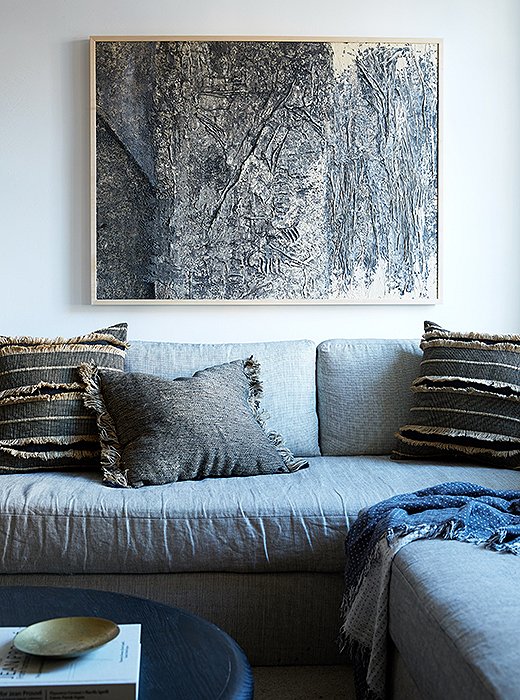
A hotel project in Belize brings Samuel to Central America a lot these days—these pillows were picked up in Guatemala during one trip. The sofa and the coffee table—along with most of the other pieces in his apartment—are custom designs.
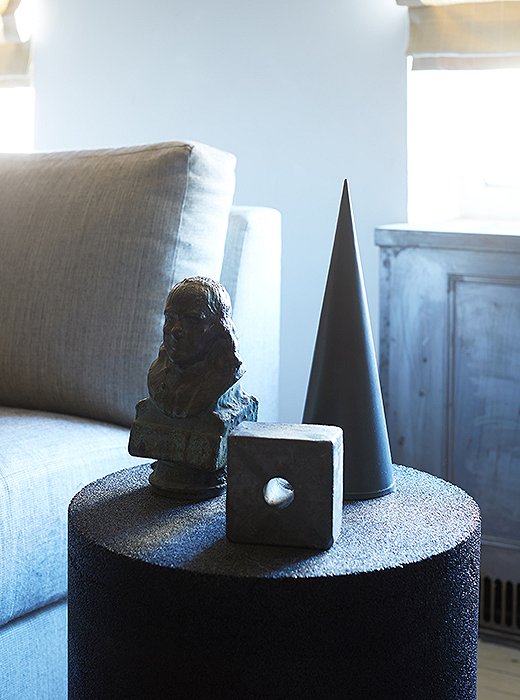
Amoia Studio, which Samuel runs with his sculptor brother, uses materials that you don’t typically see in large scale—rock salt, amethyst, malachite, even sugar. “There’s a metaphysical aspect to the stones,” Samuel explains. “They all have healing qualities.” They made this drum-shape stool from black Indian tourmaline and plaster.
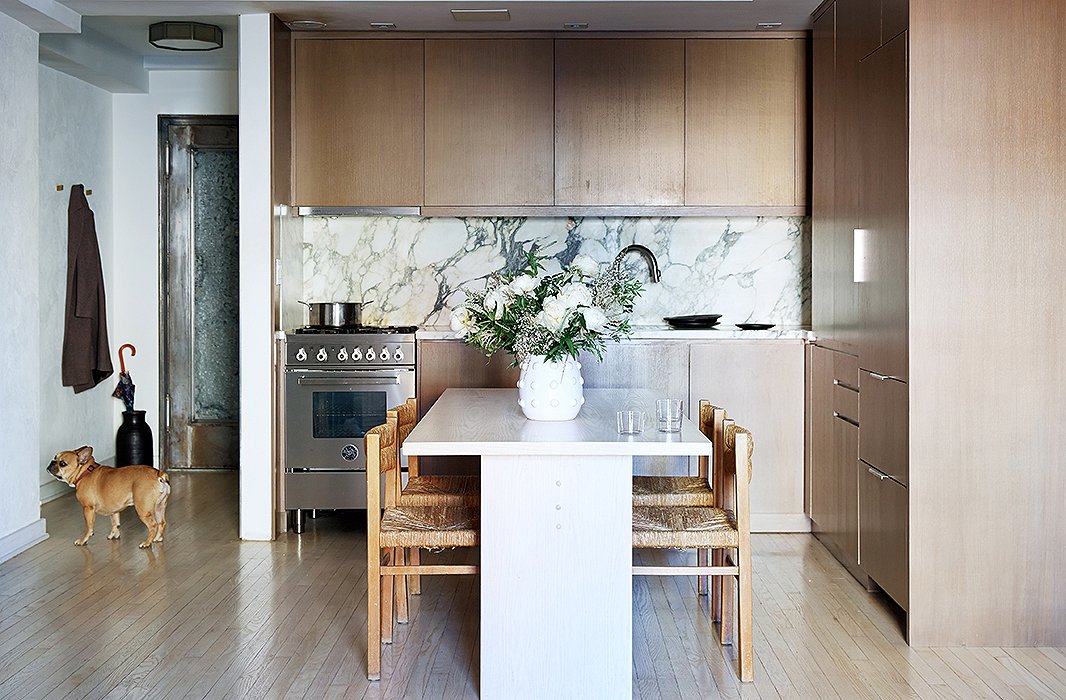
The Italian-marble kitchen backsplash, with its blown-up patterns, sets the gray palette of the apartment. Samuel cooks every day (unlike most New Yorkers), and when entertaining a crowd, he pulls the vintage dining chairs over to the sofa to seat 10 for dinner.
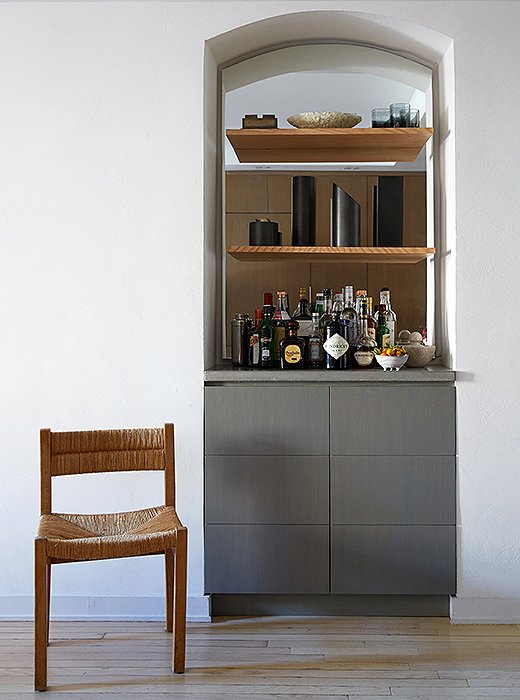
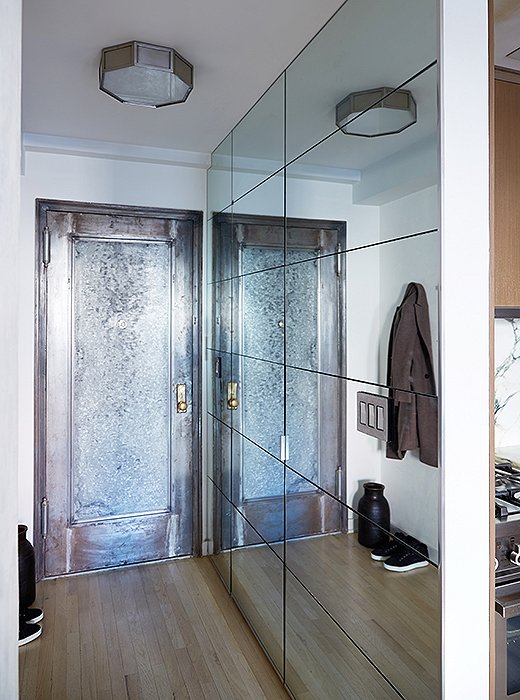
The mirrored entry hall sets a bright tone right off the bat. Samuel stripped off the old moldings on the door to get to the original zinc, then scraped it “about 17 times” to achieve this lustrous look.
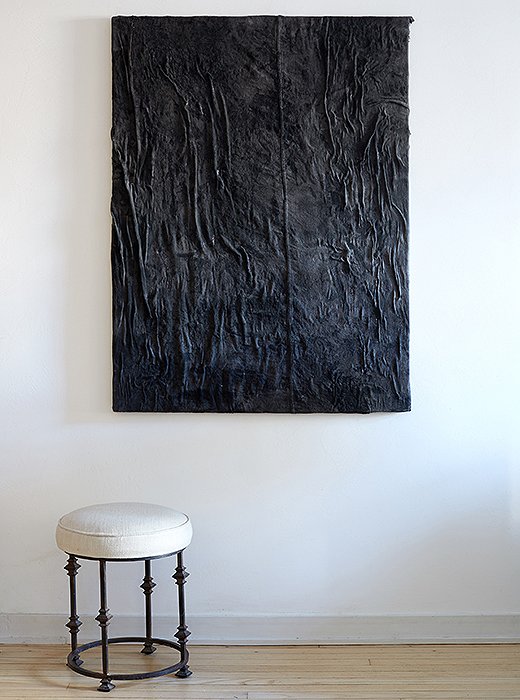
An ultratextured painting by Alex Fideli hangs above a stool of Samuel’s design. Even the backdrop brings dimensionality and rough-and-tumble texture: The floors were bleached and pickled to reflect more light, and the walls were plastered to be a little rough.

This apartment’s design, from the layout to every texture, is based on the light. We don’t get direct sunlight, but we do get really beautiful shadows.
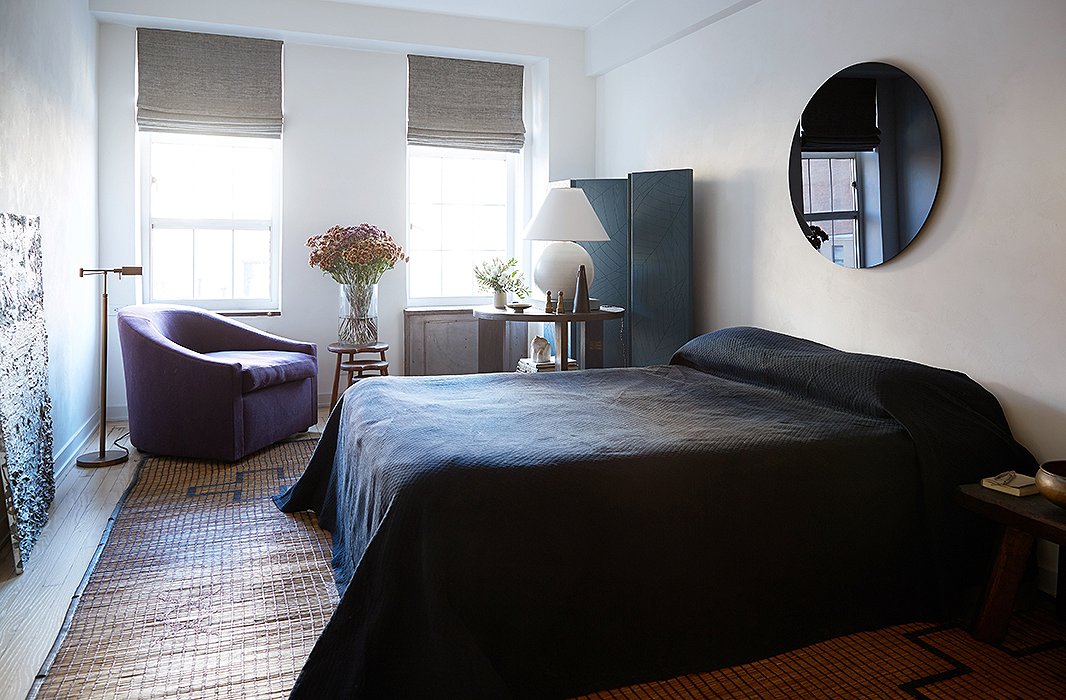
The interplay between purity and sexiness is evident in the bedroom; as Samuel says, “I went for a monastic feeling in the bedroom. No headboard, no elaborate bedding. It’s simple, but with a darker palette.”
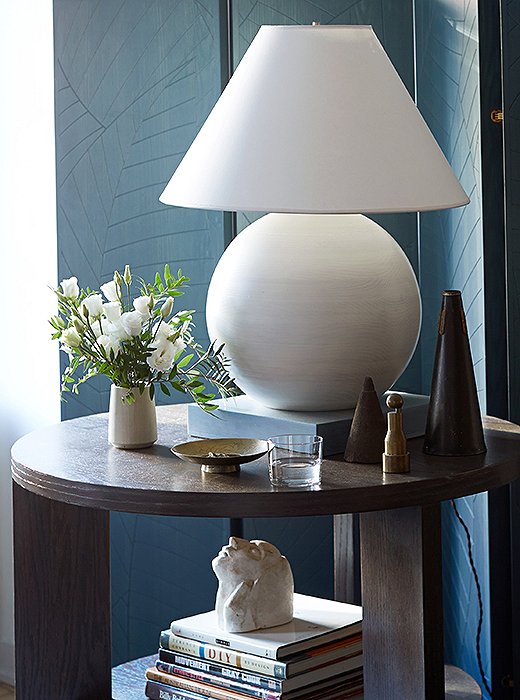
Samuel uses furnishings to heighten the effect of light, creating a poetic play. Here, a glowing white lamp on a geometric base sets off a painted folding screen made from palo blanco wood. Both pieces are his original design.
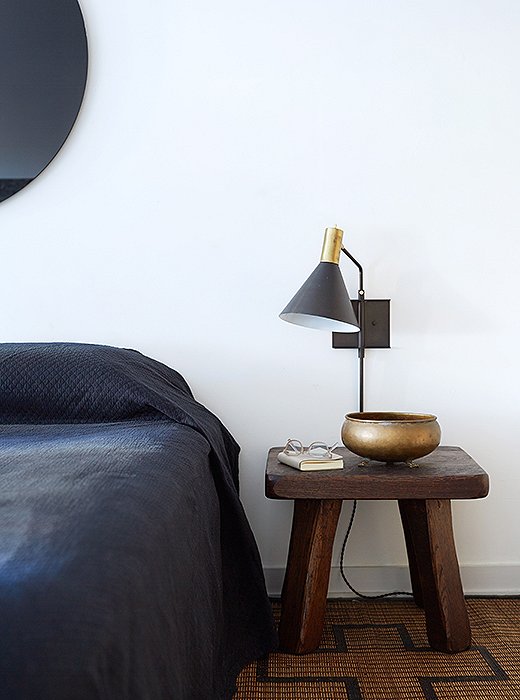
A black Art Deco mirror hangs above the bed; underneath is a rug made of palm leaf and leather. Samuel’s collection of objects, like this brass bowl, comes from travels, flea markets, a nearby African market. “I’m not into nice antique shops,” he says. “I like to go sit in the garbage of junk stores—that’s how I find things.”
Samuel’s Favorite NYC Haunts
As someone who travels constantly and spent many a late night in the city, Samuel considers this well-honed list of favorites a comfort zone; “I’m a creature of habit,” he says.
Good Eats
Sullivan Street Bakery (Chelsea location)—“a good addiction”
Jun-Men Ramen Bar—“the best ramen and chicken wings ever”
Hôtel Americano—“I’m there like four times a week for lunch or drinks”
Indochine—“I love seeing friends from my days working there”
Inspired Spots
Johannes Vogt Gallery—“for their roster of fresh and contemporary artists”
1950 Gallery (tucked into 231 West 27th St.)—“stunning Prouvé pieces”
Acne Studios (on Horatio Street)—“check out the beautiful Max Lamb pieces”
Dover Street Market—“I always find the store so inspiring”
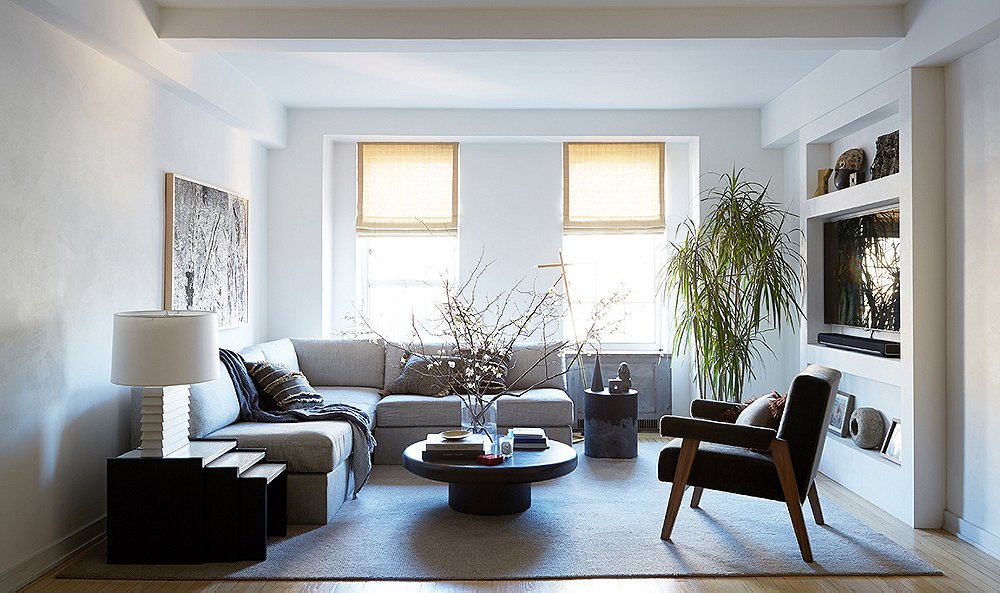
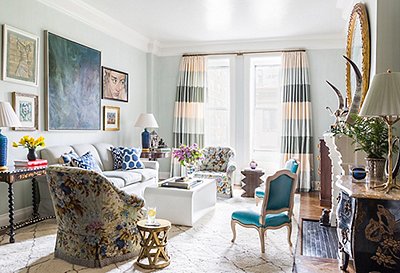
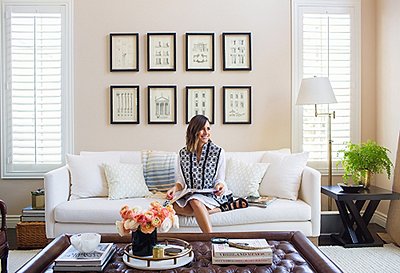
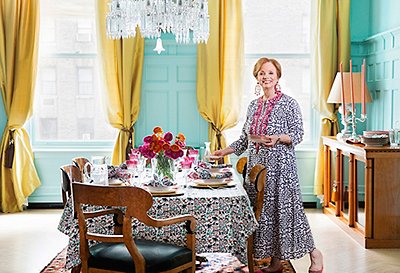

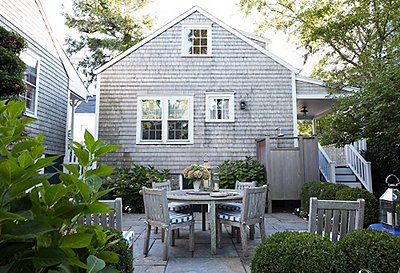
Very thoughtful design! Love the door! Love the Frenchie! Where are all the dog toys 🙂 Thank you for sharing your home.